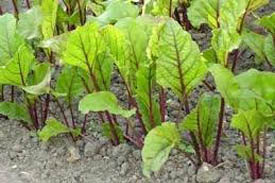Gardening: Grow Haus II
The amount of water you and Mother Nature can provide for your garden determines if you can eat, or grow weeds. This article will illustrate water resources on your property that you may be unaware of.
My barn roof encompasses a large area-a rain collector. By custom we normally just let rain water drain off into the lawns and fields and pump city water, or well water for garden growth. I ignored the huge rain collectors at first, and built a pond.
The pond was a great source of rainwater collection from higher elevation collection. The pond created a new life cycle for my amphibious little friends that ate mosquitoes, the gold fish following me around the edges, and the children learning to swim. The pond was dug out 9’ deep, 30’x30’ wide. (More on pond building in a later article). I installed extensive underground pipes from the pump house to frost free hydrants so I could water the garden by irrigation, or sprinkling.
The long term, subtle draught is taking effect over this decade. My pond is now almost bone dry. I am hoping that there will be some tropical depressions up this way in the summers to fill it up-as a back-up watering- it is now, basically a dry hole.
I did learn about surface irrigation and sprinkling. By digging trenches for the water flow between the rows created a vast swamp of mud. So after the clay based soils dried out the weeds grew in abundance. When sprinkling with pond water, fungus and other yet undiscovered weird pathologies ate plants. Bugs thrived in the humid environment.
But I had food production with added labors to come. As the summers became drier and I had given up on the pump house with the drying pond, I investigated sprinkler hoses, drip irrigation and buried buckets. I found that the sprinkler hoses required more pressure than I had, and no matter how short, they seemed to have a ½ length usage, in that on a 100’ hose I could only get ½ enough water at the far end. Drip irrigation was a daily chore to keep the weeds from competing and I had to fill the gravity tanks from my spring holding tank. Incidentally my spring in 1980 was bold, by 2002 it was a drip.
I was making progress in my fantasy of a no work-weed free garden, however with taking 3 gallon buckets, drilling a small 3/8” hole at the bottom edge, one on each side. I buried the bucket between the tomato plants, and with daily filling-that’s me in the picture carrying 5 gallon water buckets- I had fair production.
I might add when we look at beautiful garden seed catalog and similar garden beautiful pictures (while we are mesmerized by the garden fever) they are cultivated my swarms of horticulturists and busy little laborers watering and tending each plant.
I came to the conclusion that above ground watering was a waste of water since irrigation and sprinkling alone wasted 30% water in the air; the weed growth was backbreaking slave labor. Diseases were not uncommon. Sounds grim doesn’t it? Nah! This is all just learning.
I want to point out that my garden plot had tons of floor hay; the goats left their urine and berries in, chickens also contributed about a ton to two tons of manure and all this was gleefully tractor shoveled up and tilled into the big plot each fall. So the we must understand after years -about ten- of adding composts and organic amendments the enrichment of the soil level was about a foot deep, darker of course but did NOT make any significant water holding contribution as the magazine and book articles would promote from the New York apartment garden writers. Mulching was a big help, wide row and bed planting was a big help. The problem with mulching was the nitrogen loss to the growing plants that required additional nitrogen amendments. More on mulching later.
After watching a neighbor install a septic leach line the age of reasoning struck me. My leach field was greener than the surrounding hay field in the summer and it was five feet deep. That meant roots went deep for moisture and nutrients. Further observation and discussion with the old timer who was putting in the leach lines for over 40 years discussed the old days, before days, and now the new days. In short, the 4” or 6” slotted plastic flexible sewer-leach line drains, covered with fire polyester not rotting “sock” are used today. I also learned about leaves and hay, once buried deep did not decompose for years in some cases. Interesting!
So this now all leads up to a complete reorganization of my gardening techniques and an extensive new UNDERGROUND watering system going in this spring- bit by bit as I do it my self. Experimentation with small 6’ X 30’ bed kept the weeds mostly at bay since the surface of the bed does not get wet unless exposed to rain. The underground slotted pipe(s) provide all the moisture needed as the roofs run off is a bigger flat surface collection than the garden growing area. Water, I hypothesize, collects in volume in the slotted pipe and leaks slowly to the roots giving a longer watering time for the roots to absorb the nutrients in the bed as water is like a solvent – mixing the nutrients to be absorbed by their hair like roots.
In a normal rainfall it takes several inches to soak the ground enough for the water to mix over a foot deep. Let us look at it this way. You buy a “rain gauge”, a small clear plastic funnel shaped rain collector that measures in inches the amount of the rainfall between your recording times – usually 24 hours. So you record 1”. What does this tell you? Sounds like a lot but if you do the hands and knees routine and turn over the soil, it has not penetrated an inch down; just enough to start the weeds at the surface top ¼ inch of soil.
An inch of water in your rain gauge tells you that you have collected 2 ounces of water. In a square foot of space you have collected 2x144inches=288ounces. That’s 288 ounces divided by 32 ounces (quart) = 9 quarts. So now take a gallon and a quart full bucket and sprinkle it over a 1-foot square foot area. Give it an hour to settle and then turn it over and see how deep it went. Think about dry roots on tomato plants that go 3 feet deep, or corn 9 feet deep, to find water in less fertile barren depths. If you are in a draught it is barren dry way beyond garden plants.
Let us say you have an 800 square foot roof side that you want to gutter to channel rain water off to a collection/direct underground slotted plastic pipe. Let us say you have collected 1” of water again, now at 2 oz. X 1 square foot = 288 oz. X 800 square feet you have 230,400 oz. Divided by 128 oz (gallon) = 1,800 gallons of free water. Now you are thinking of how to use a rain gauge.
Bigger roof areas means more collection, and extra water (we hope) through the summer to run off in to storage containers.
Now envision you are a small time lettuce specialty grower with a 40’ x 100’ big hoop house. Could you collect water off that roof and channel it into underground beds? Of course you could. Even if you have a 5 acre hoop house you could collect water and channel it underground, save the environment, save money, and as we learn: avoid weeds, Round Up weed killers, as well as tearing up the soil and compacting it each year.
Let us now go to a larger test bed that is not below grade and roto tilled mixed with composts and additives but built above ground and layered with fertilizer amendments. Our point in this test bed is that it is 10’ wide with a 2’ center walk way and each side bed is 4’ wide and as long as you want to make it. Since we are discussing watering, you will note in the photo that there is a double slotted pipe in each 4’ bed. The ends fill pipes are singular to that one bed for better distribution of water since the slotted pipes will settle UNLESS you place a treated 2” x 4” rigid support underneath. I might add if this is a big concern for you, I think you could spend the extra money and buy pre-punched holes in rigid PVC pipe. I like the slotted pipe.
I also use the under bed slotted pipes in my larger solar greenhouse beds.
Next week we will continue with more improvements and flexibility in the hoop house design.
Contact me at: back2theland@swva.net
COPYRIGHT: 2009 Back2theLand.com Mark Steel



